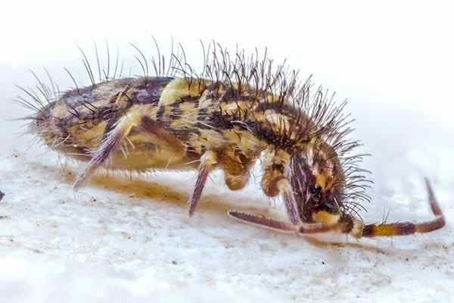Everything Houston Homeowners Need To Know About Springtails
Springtails are small, gray, soft-bodied arthropods named for their tail-like appendage that they can compress and then extend allowing them to "spring" into the air to escape predators. In this blog, we'll give you the lowdown on everything you need to know about springtails—what they are, where they live, problems they cause, and what you can do to prevent them from getting into your Houston home.
Are Springtails Dangerous?
Springtails do not pose a threat to the humans or pets they come into contact with, but they are considered nuisance pests. While they do not bite and are not known to transmit diseases, they can nevertheless cause a lot of aggravation when they get inside—especially if they get into food items, cupboards, or bathrooms.
Beyond the nuisance they pose, a springtail's presence can be an indicator of other problems present in your home. If you've seen springtails around your house, it could be an early warning sign that you have a moisture problem somewhere.
Where Are Springtails Found?
Like many of Houston's common household pests, springtails are always in search of a food and water source. Not surprisingly, they are commonly found in kitchens and bathrooms, inside furniture, around utility pipes, inside potted plants, and walls and crawl spaces.
Outdoors, you can find them around the decaying organic material that they feed on, such as vegetation, fungi, or algae that grows on the surfaces of pools or creeks. They can also be found living under woodpiles, in firewood, on logs, and inside mulch piles.
How Do Springtails Get Indoors?
While springtails can get into your home a number of ways, they commonly enter through window screens, door thresholds, or gaps along unsealed utility pipes.
How Can I Prevent Springtails In My Houston Home?
Like any pest issue, the best way to deal with a springtail problem is to prevent it from happening in the first place. There are several steps homeowners can take to decrease their risk for springtail infestations indoors, including:
Reducing moisture levels throughout the home using air conditioners and dehumidifiers, especially in common problem areas such as the basement
Fixing interior moisture problems, such as leaking pipes, as quickly as possible
Cleaning up spills immediately and removing any sources of standing water present in or around the home
Ensuring crawl spaces are ventilated to allow for sufficient airflow
Inspecting new houseplants before bringing them indoors
Giving plants only enough water that they need to survive, not over-watering them
Turning off outdoor lights when not in use, as light can attract springtails
Cleaning gutters to ensure they aren't clogged and are providing proper water flow, and fixing them if necessary
Removing debris from the yard and placing leaf piles, grass clippings, and woodpiles a distance away from the exterior of the house
What Can I Do If I Have A Springtail Problem?
If prevention fails, don't worry—you don't have to deal with the problem alone. The best solution for a springtail problem is to call a qualified pest control company with the training and experience required to eliminate the problem. If you're worried about springtails in your home, look no further than Modern Pest Control.
Since 1952, the team at Modern Pest Control has provided Greater Houston homeowners with safe and affordable pest control for all the pest issues they might face. Don't wait! Contact us today for a consultation and make your springtail problem a thing of the past!

